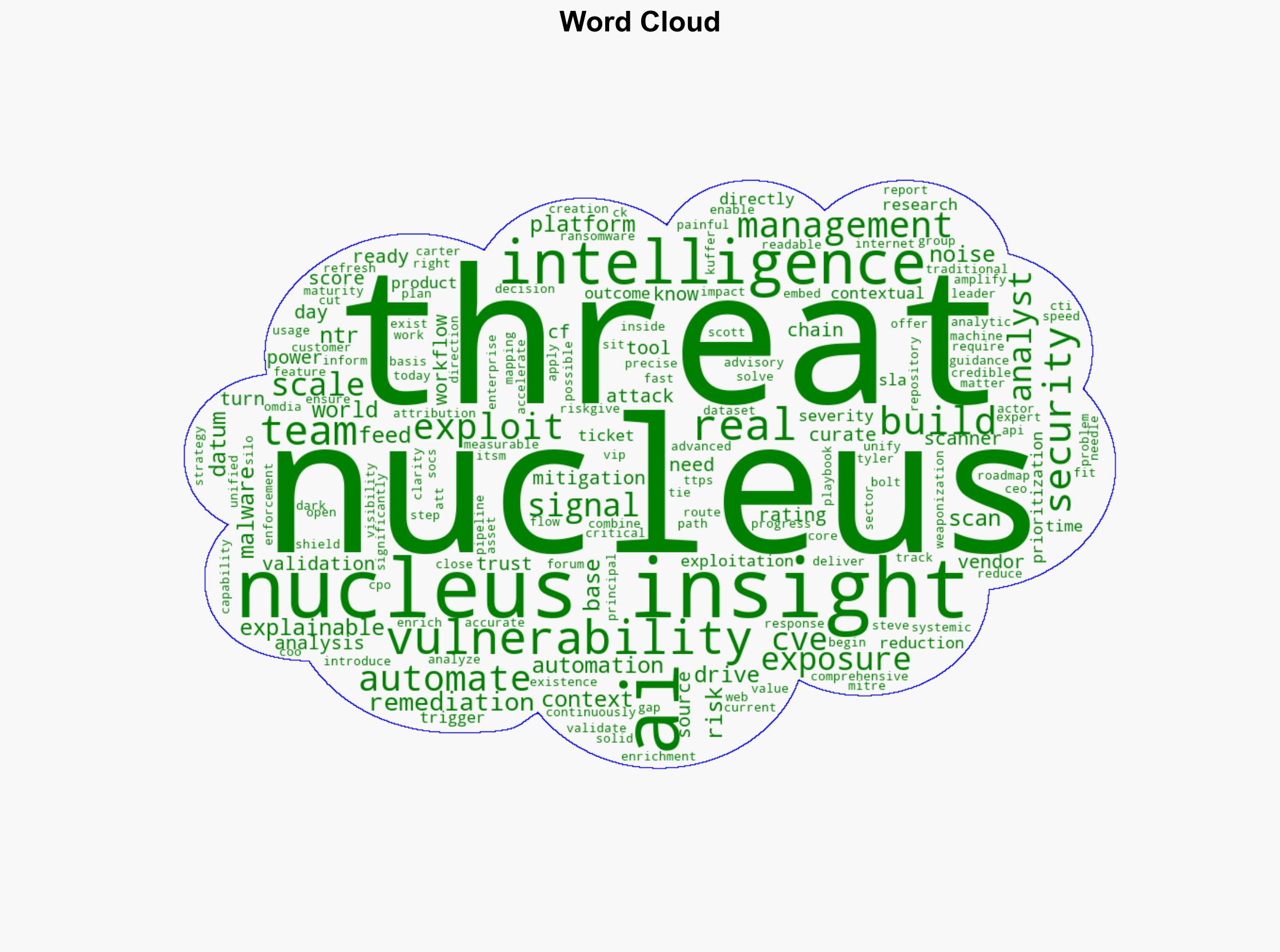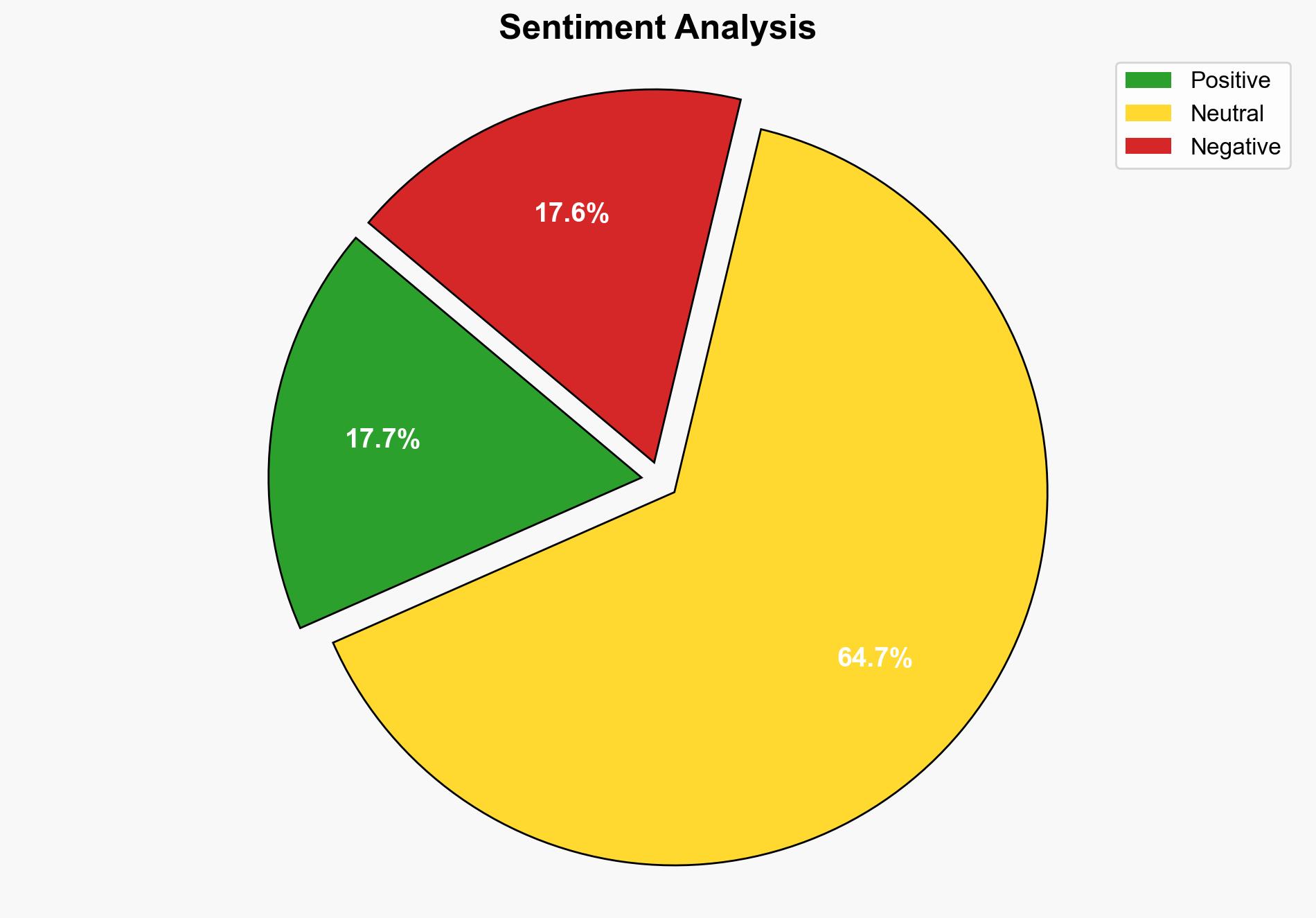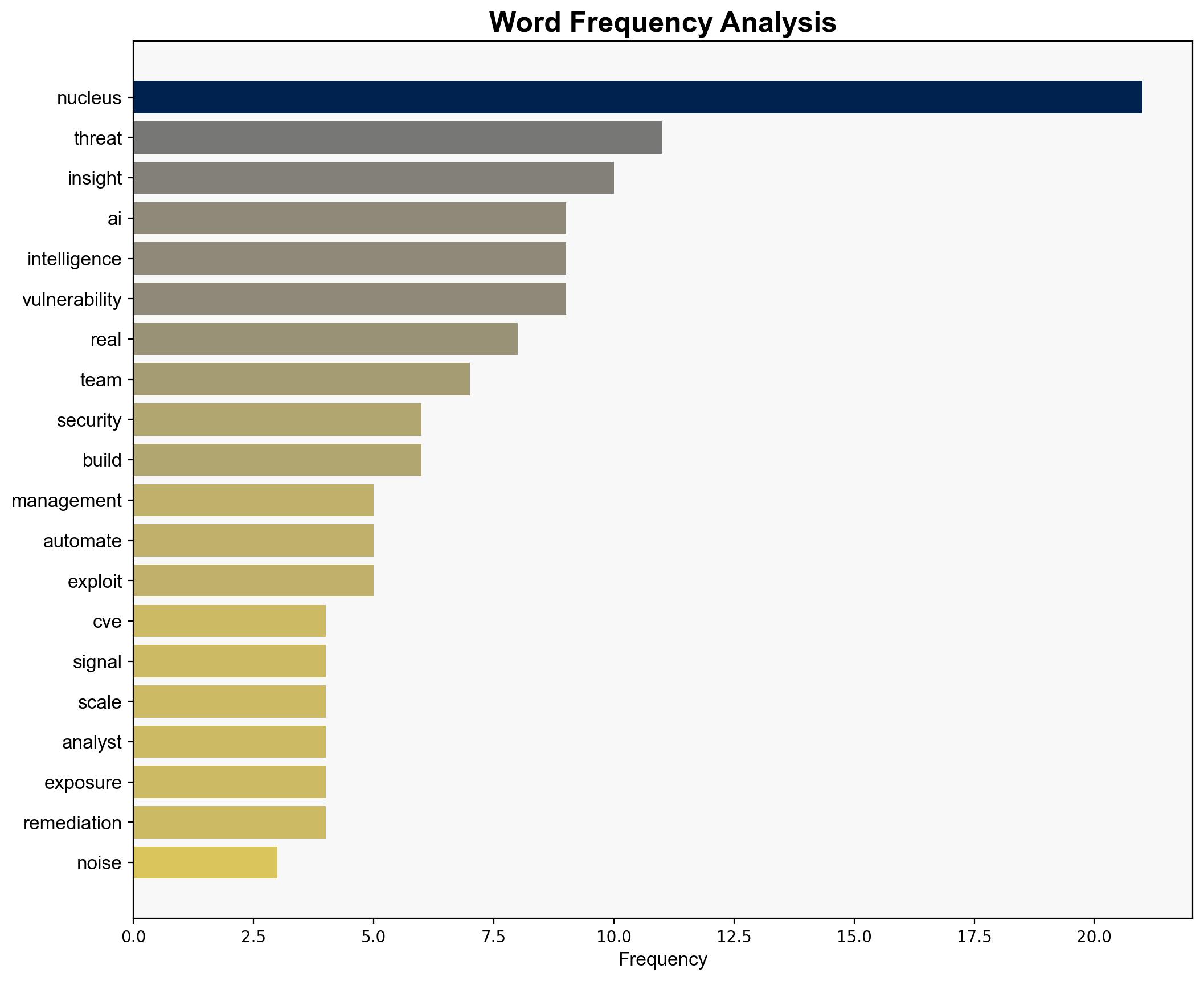Nucleus Insights turns CVE noise into an explainable threat signal – Help Net Security
Published on: 2025-09-03
Intelligence Report: Nucleus Insights turns CVE noise into an explainable threat signal – Help Net Security
1. BLUF (Bottom Line Up Front)
Nucleus Security’s new AI-powered threat intelligence tool, Nucleus Insight, aims to transform complex CVE data into actionable threat signals. The most supported hypothesis is that Nucleus Insight can significantly enhance vulnerability management by providing precise, context-rich threat intelligence. Confidence level: Moderate. Recommended action: Monitor the tool’s integration and effectiveness in real-world applications to validate its claimed benefits.
2. Competing Hypotheses
Hypothesis 1: Nucleus Insight effectively enhances vulnerability management by providing precise, explainable threat signals that improve decision-making and reduce exposure to threats.
Hypothesis 2: Nucleus Insight’s capabilities are overstated, and it may not significantly improve vulnerability management due to potential limitations in AI accuracy and integration challenges.
Using ACH 2.0, Hypothesis 1 is better supported due to the detailed description of AI integration and validation processes. However, the lack of empirical evidence and real-world performance data leaves room for Hypothesis 2.
3. Key Assumptions and Red Flags
Assumptions:
– AI can accurately interpret and prioritize CVE data.
– The integration of AI into existing systems is seamless and effective.
Red Flags:
– Over-reliance on AI without sufficient human oversight could lead to missed threats.
– Lack of independent validation of Nucleus Insight’s effectiveness.
4. Implications and Strategic Risks
The successful deployment of Nucleus Insight could set a new standard in cybersecurity, potentially reducing the risk of cyberattacks by improving threat prioritization. However, failure to deliver on its promises could lead to wasted resources and a false sense of security. Economically, this could impact organizations relying heavily on AI for cybersecurity without proper backup strategies.
5. Recommendations and Outlook
- Conduct independent evaluations of Nucleus Insight’s performance in diverse environments.
- Develop contingency plans for potential AI failures or inaccuracies.
- Scenario Projections:
- Best Case: Nucleus Insight becomes a benchmark tool, significantly reducing cyber threats.
- Worst Case: The tool fails to deliver, leading to increased vulnerability exposure.
- Most Likely: Nucleus Insight provides moderate improvements, requiring further refinement.
6. Key Individuals and Entities
– Steve Carter
– Scott Kuffer
– Tyler Shields
7. Thematic Tags
national security threats, cybersecurity, counter-terrorism, regional focus




